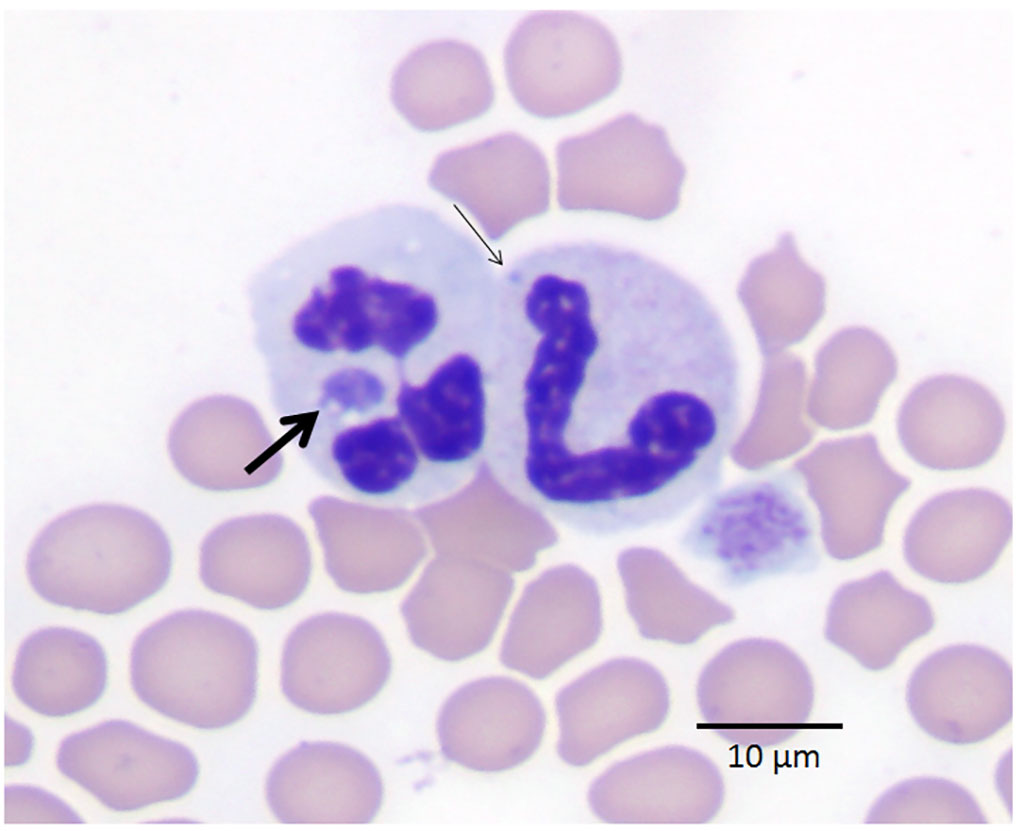Real-Time PCR-Based Serological Diagnosis of Human Granulocytic Anaplasmosis
Posted on 26 Dec 2022
Human granulocytic anaplasmosis (HGA) is a tick-borne infection caused by the intracellular bacterium Anaplasma phagocytophilum, an emerging pathogen. HGA can manifest as a subclinical infection; however, most symptomatic persons have fever, myalgia, and headache associated with thrombocytopenia, leukopenia, and elevated transaminase levels.
Laboratory diagnosis of HGA can be established by using microscopy, serology, or nucleic acid amplification test (NAAT). Microscopy can be used to diagnose acute infections, but relies on experienced personnel to visualize intragranulocytic clusters or morulae in peripheral blood. Serology is more commonly used to diagnose HGA, relying primarily on indirect immunofluorescence assays.

Clinical Scientists at the University of Manitoba (Winnipeg, MB, Canada) and their colleagues tested two different serum specimen groups for A. phagocytophilum DNA. The first group consisted of serum samples from persons who were positive for A. phagocytophilum by using the NAAT of whole blood. The second group consisted of acute and convalescent serum samples.
The team isolated DNA from 100 μL of serum by using DNeasy 96 kits (Qiagen, Venlo, The Netherlands). The used carrier RNA (Applied Biosystems/Thermo Fisher Scientific, Waltham, MA, USA) to improve recovery of low amounts of nucleic acids and amplified the msp2 gene of A. phagocytophilum. The scientists performed amplifications on a ViiA7 system (Applied Biosystems). They also used the semiquantitative Focus Diagnostics A. phagocytophilum IFA IgG kit (DiaSorin, Saluggia, Italy), and IgG titers >1:64 indicated current or previous A. phagocytophilum infection. They defined seroconversion as a >4-fold increase in titer between acute and convalescent serum samples.
The investigators reported that of 154 paired acute and convalescent serum samples submitted for Anaplasma serology, 19 (12.3%) acute specimens and three (1.9%) convalescent specimens were PCR positive. Average Ct values were 30.3 (range 23.7–37.5) for acute samples and 34.3 (range 27.6–39.9) for convalescent samples. They did not observe seroconversion in 10 (52.6%) patients who had PCR-positive acute serum specimens.
Of the 154 paired acute and convalescent serum samples, 28 (18.2%) were serologically positive, but only 11 (7.1%) demonstrated seroconversion. Titers increased from <1:64 to 1:64 in three paired samples, 13 samples demonstrated stable or decreasing titers, and one titer doubled. PCR of acute samples detected 9/11 (81.8%) patients who displayed seroconversion. PCR was negative using acute serum samples for two patients; those patient samples had initial IFA titers >1:1024, indicating either previous infection or delayed sampling. The sensitivity of serum-based PCR was 81.8%, and specificity was 93.0% compared with seroconversion.
The authors concluded that while whole blood is the optimal specimen for anaplasmosis diagnosis, but might not be available in all cases. The PCR tested serum samples collected in Canada for Anaplasma serology and found 84.8%–95.8% sensitivity and 2.8 average cycle threshold elevation. Serum can be acceptable for detecting Anaplasma spp. when whole blood is unavailable. The study was published in the January 2023 issue of the journal Emerging Infectious Diseases.
Related Links:
University of Manitoba
Qiagen
Applied Biosystems
DiaSorin














